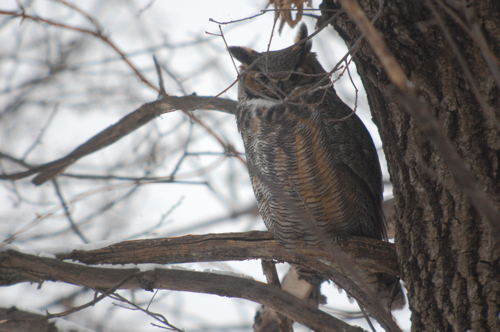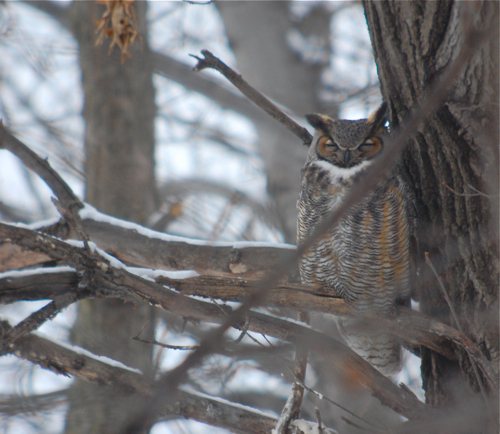 I spent the weekend at The National Eagle Center in Wabasha, MN as a Swarovski Field Tek for a new company called Big River Optics who sells binoculars and spotting scopes through the Center. I'll be there next Saturday and the following weekend (when we have a Birds and Beers) answering questions about digiscoping, binoculars and scopes. Also, if you have Swarovski binoculars or a scope and would like a pro cleaning (similar to what they would do at the Swarovski headquarters) or if you need a minor eye cup adjustment, I'll be there to do that too. Stop in and say, "Hi!" It's not a bad way to spend the weekend--along the Upper Mississippi River watching bald eagles (like the above immature) float by.
I spent the weekend at The National Eagle Center in Wabasha, MN as a Swarovski Field Tek for a new company called Big River Optics who sells binoculars and spotting scopes through the Center. I'll be there next Saturday and the following weekend (when we have a Birds and Beers) answering questions about digiscoping, binoculars and scopes. Also, if you have Swarovski binoculars or a scope and would like a pro cleaning (similar to what they would do at the Swarovski headquarters) or if you need a minor eye cup adjustment, I'll be there to do that too. Stop in and say, "Hi!" It's not a bad way to spend the weekend--along the Upper Mississippi River watching bald eagles (like the above immature) float by.

We did get to watch some eagles squabble over a carp, right across the river from the Eagle Center. An immature bald eagle got a huge carp and an adult came in to take over. Other immatures came in to see if they could snatch a few morsels or the fish.

The adult was very intimidating to the younger birds. As it would chase off one immature eagle, another would try to sneak in to claim the fish.

The immature eagle on the right almost had the fish when the adult charged it.

I love the eagle on the gound on the left. It's as if the bird is say, "Oh crap, this just got real, I'm gettin' out of the way!"

The adult appears to have won the stand off with that particular immature.

Alas, the adult's charge was full on and it tried too late to put on the brakes. It slid right off the ice and into the water. Above, it's just about to go in.

It managed to turn around and get out quickly. I missed that shot and this picture of it getting out is blurry. Still, not a bad behavior capture for something on the other side of a river from where I was standing.

The adult was the overall winner of the carp. A few of the immature were able to sneak in and get a few tidbits, but the adult ate the most. It didn't have an easy time of it. Below is a video and in the first part, an immature slams it from above. You'll know when it's about to happen because the birds on the right look up and see it coming. And watch how the eagles run around on the ice...it's hard to take them as majestic when they run like that.
[youtube]http://www.youtube.com/watch?v=g1FTyksKEJE[/youtube]


 I mentioned earlier that there's
I mentioned earlier that there's 





